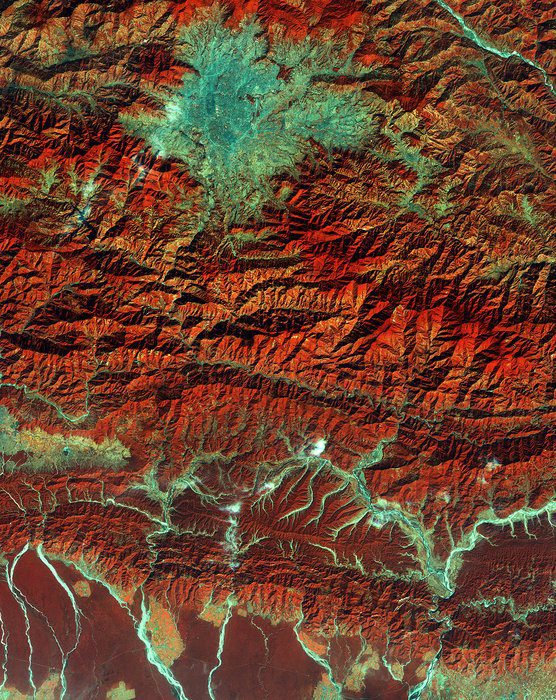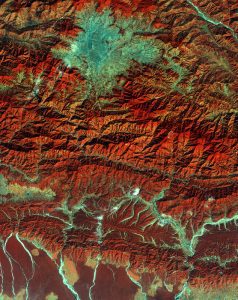
Vegetation appears red, while waterways and buildings appear light green and blue.
Although many effects remain of the tragic April 2015 earthquake that killed 9,000 people; destroyed villages, cultural symbols and structures; and forever changed the landscape, recent satellite images, among other evidence, show that the area is moving forward and doing its best to rebuild.
In this image, the runways of the Tribhuvan International Airport are clearly visible near the center of the valley. A “ring road” runs around central Kathmandu city and parts of surrounding cities.
The image demonstrates just a portion of Nepal’s varied terrain: from the mountains to the north to the plains in the south. Water runs off from the mountains, forming large rivers that cut through the forested plain, with some areas of agriculture.

In this Copernicus Sentinel satellite image, the lower part of the image appears hazier than the mountainous areas because humidity is higher in the plains. (Credit: Contains modified Copernicus Sentinel data (2015), processed by ESA)
Click here for further evidence of Nepal’s regrowth and rebuild.